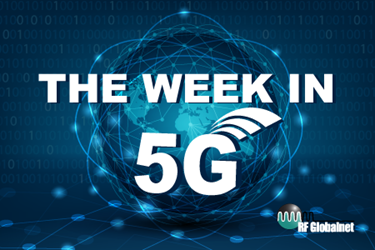The Week in 5G: 7/14/2020 — U.K. Bans Huawei Gear; Ericsson Outlines Top 5G Use Places
By Ed Biller

While many frame 5G’s optimal applications in terms of use cases, Ericsson this week posited that exploring use places is a more fruitful endeavor. Specifically, the company’s blog post identifies “places where 5G can deliver material value for a handful of use cases in specific geographical areas with large potential to scale.”
South Korean telco KT announced it has completed “development and verification" for its 5G network slicing service aimed at the enterprise,” reports ZDNet. “Customers will be able to divide the network to prioritize certain virtual networks to a specific workforce or application so that there is no interruption in data transfers.”
KT did not announce a launch date for the service.
Finland’s Nokia announced a software-based upgrade that ease migration of millions of the company’s 4G base stations to 5G New Radio (NR).
The company estimates this upgrade “will save the telecommunications industry potentially tens of billions of euros in site engineering and re-visit costs as communication service providers are able to upgrade their networks to 5G/NR on FDD with software.”
The announcement states Nokia’s solution can provide support for about 1 million radios right now, 3.1 million by the end of 2020, and more than 5 million in 2021.
Meanwhile, in a study published this week in Annals of Internal Medicine, Alperen Acemoglu, PhD, and a team of Italy-based investigators “sought to show how surgical expertise could be exploited and shared more effectively using new telecommunication standards,” reports MD Magazine’s HPC Live. The team performed transoral laser microsurgeries remotely on an adult human cadaver.
The study claims the surgeries prove the feasibility of remote surgery, as the surgeons were able to function as if they were physically inside the operating room. “It took a mean time of 40 ms between 2 devices both connected to the 5G Radio Access Network. After adding an application layer, the mean one-way latency for transmission of the video was 102±9 ms and the maximum delay was below 140 ms,” states the HPC Live report.
In the U.K., Huawei equipment will be banned from inclusion in the country's 5G network despite a January announcement from the government stating the Chinese telecommunications giant would have its market share capped at 35 percent and its equipment would be omitted as part of the core network. As of the end of 2020, U.K. telecoms operators may not buy equipment from Huawei, reports CNET.
UK Digital Minister Oliver Dowden dubbed it "necessary and prudent" to strip Huawei equipment from the country’s 5G networks by 2027, “acknowledging it would set back the UK's rollout of 5G by another year.”
The U.S. surely will count this action as a “win,” and Forbes contributor George Calhoun argues the U.S. crusade against Huawei has found additional success by interfering with the Huawei’s integrated circuit supply chain. Taiwan Semiconductor Manufacturing Company (TSMC) trades on the New York Stock Exchange and is the largest semiconductor company (by market value) in the world. In addition to Huawei, TSMC provides chips for other “fabless” manufacturers, including Qualcomm and Nvidia.
Calhoun notes that U.S. sanctions announced in May – the sanctions that prompted the U.K. to reevaluate its neutral stance on Huawei – “enjoin any company, anywhere, from using American technology to supply Huawei – and that catches TSMC in the anti-Huawei net, because TSMC uses semiconductor-manufacturing equipment that does come from U.S. companies.”
Indeed, Calhoun continues, the IC production process is so expensive that much of the industry depends on TSMC; businesses like Intel in the U.S. (which produces its ICs in-house) struggle to cover costs their fabless competitors don’t have to worry about. “If TSMC were to disappear or be neutralized,” Calhoun writes, “it would cripple 5G and many other facets of the digital economy.”
Finally, a recent Oregon State University study into the effects of RF radiation generated by 5G wireless technology suggests its effects are “predominantly benign,” reports Interesting Engineering. The studied embryonic zebrafish, which are similar to humans “in terms of developmental processes as well as on the genomic level, so they were ideal for this case study.”
The study findings were published in the peer-reviewed journal PLOS One.
